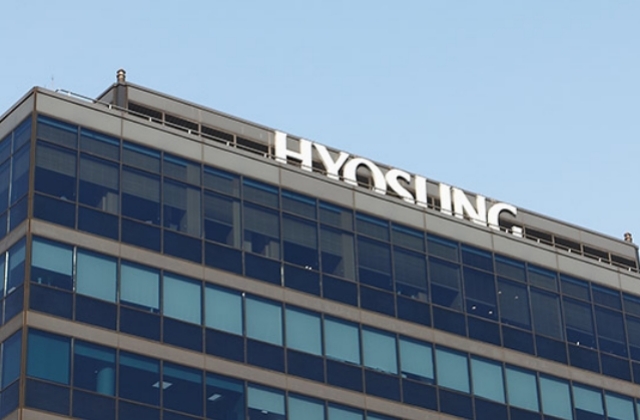Hyosung Advanced Materials has been confirmed to become Amazon’s airbags supplier for its self-driving electric vehicles. It was announced on Tuesday, March 16, that the South Korean industrial materials maker had been tapped for an airbag deal for Jeff Bezos’ company-backed autonomous vehicle.
Korean airbags bound to the U.S.
As per The Korea Times, Hyosung Advanced Materials’ airbag development affiliate, Global Safety Textiles, has signed a contract with Zoox, a robotaxi firm that was purchased by Amazon this year for more than $1 billion.
Based on the deal, Hyosung’s Global Safety Textiles will supply its woven airbag products to Zoox. Currently, this company is developing its self-driving robotaxi, so this is where the airbags are set to be used.
The Robotaxi has been described as a square shape multi-purpose vehicle with sliding doors. Amazon is likely building this for delivery and for other types of service. The Hyosung airbags will be fitted in this four-seat car.
The airbag manufacturing company is expected to start delivering the items in 2022. In any case, Hyosung Advanced Materials admitted this is the company’s first delivery for airbags that will be installed on self-driving cars.
“The company will continue to introduce innovative products that can meet new demand from the future mobility sector, leveraging Global Safety Textiles’ development and manufacturing capabilities,” Hyosung CEO Hwang Jung Mo said.
The cutting-edge airbags for the Robotaxi
Amazon’s Robotaxi can operate without a driver, but it has a big space for transporting passengers or goods. Since this is not a common vehicle, it requires a special kind of airbags, and Hyosung stated that it would make sure to provide the kind that Amazon’s autonomous cars need.
Korea Joongang Daily reported that the materials that will be used for the airbags will be thoroughly checked. In fact, the company will even send the material to ZF Friedrichshafen AG to make sure it is at par with the requirements for "Robotaxis."
“Such characteristics require that airbags be designed in a variety of shapes based on a completely new concept,” Hyosung said. “In response, the new-concept three-dimensional airbags wrap around the riders from above when deployed instead of the horizontal deployment used in traditional vehicles.”



 OpenAI Explores Massive Funding Round at $750 Billion Valuation
OpenAI Explores Massive Funding Round at $750 Billion Valuation  Oracle Stock Slides After Blue Owl Exit Report, Company Says Michigan Data Center Talks Remain on Track
Oracle Stock Slides After Blue Owl Exit Report, Company Says Michigan Data Center Talks Remain on Track  Volaris and Viva Agree to Merge, Creating Mexico’s Largest Low-Cost Airline Group
Volaris and Viva Agree to Merge, Creating Mexico’s Largest Low-Cost Airline Group  Harris Associates Open to Revised Paramount Skydance Bid for Warner Bros Discovery
Harris Associates Open to Revised Paramount Skydance Bid for Warner Bros Discovery  Shell M&A Chief Exits After BP Takeover Proposal Rejected
Shell M&A Chief Exits After BP Takeover Proposal Rejected  Apple Opens iPhone to Alternative App Stores in Japan Under New Competition Law
Apple Opens iPhone to Alternative App Stores in Japan Under New Competition Law  Sanofi’s Efdoralprin Alfa Gains EMA Orphan Status for Rare Lung Disease
Sanofi’s Efdoralprin Alfa Gains EMA Orphan Status for Rare Lung Disease  Citi Appoints Ryan Ellis as Head of Markets Sales for Australia and New Zealand
Citi Appoints Ryan Ellis as Head of Markets Sales for Australia and New Zealand  noyb Files GDPR Complaints Against TikTok, Grindr, and AppsFlyer Over Alleged Illegal Data Tracking.
noyb Files GDPR Complaints Against TikTok, Grindr, and AppsFlyer Over Alleged Illegal Data Tracking.  Trump Administration Reviews Nvidia H200 Chip Sales to China, Marking Major Shift in U.S. AI Export Policy
Trump Administration Reviews Nvidia H200 Chip Sales to China, Marking Major Shift in U.S. AI Export Policy  Nike Shares Slide as Margins Fall Again Amid China Slump and Costly Turnaround
Nike Shares Slide as Margins Fall Again Amid China Slump and Costly Turnaround  Micron Technology Forecasts Surge in Revenue and Earnings on AI-Driven Memory Demand
Micron Technology Forecasts Surge in Revenue and Earnings on AI-Driven Memory Demand  Blackstone Leads $400 Million Funding Round in Cyera at $9 Billion Valuation
Blackstone Leads $400 Million Funding Round in Cyera at $9 Billion Valuation  Amazon in Talks to Invest $10 Billion in OpenAI as AI Firm Eyes $1 Trillion IPO Valuation
Amazon in Talks to Invest $10 Billion in OpenAI as AI Firm Eyes $1 Trillion IPO Valuation  FDA Says No Black Box Warning Planned for COVID-19 Vaccines Despite Safety Debate
FDA Says No Black Box Warning Planned for COVID-19 Vaccines Despite Safety Debate  ANZ New CEO Forgoes Bonus After Shareholders Reject Executive Pay Report
ANZ New CEO Forgoes Bonus After Shareholders Reject Executive Pay Report 

























